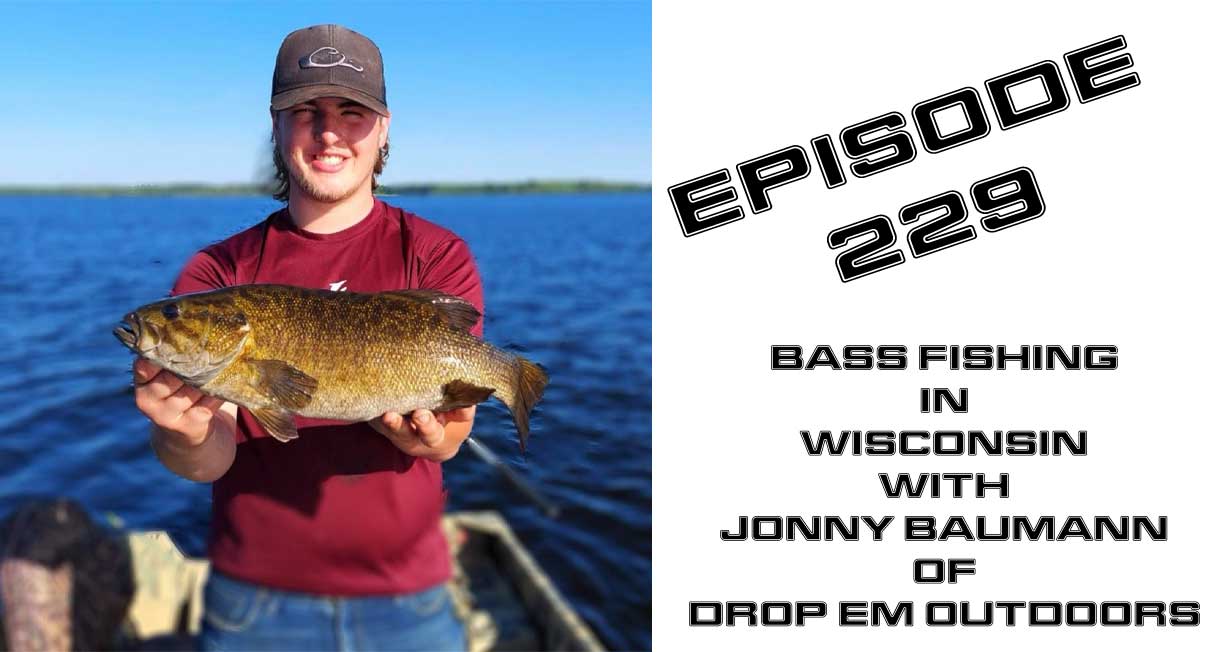
When fish are low in the water column, smart ice anglers know that bottom pounding and bottom scrounging are “go-to” presentations. Truly successful ice fishermen, however, know when to pound, when to scrounge, and when to combine the two to catch more walleyes, perch, bluegills and other gamefish. Here’s how to determine the best presentation every time.
The flasher is beginning to show fish, but they’re just not committing. Jon Thelen brings his bait up out of the hole, shifts the knot position on the jig eye and drops his it back to the bottom, but employs a decidedly different presentation than he used to draw in the fish. It doesn’t take long for him to convince one of the walleyes to bite.
Like most veteran ice anglers, Thelen spends quite a bit of time with an ice jig or spoon close to the bottom. Much of the fish’s food lives on the bottom, so fish of various sorts spend much of their time in the same neighborhood. Thelen is quick to point out, however, that not all bottom presentations are created equal, and it’s always important to consider what you’re trying to accomplish.
“The two bottom presentations I use the most often are ‘bottom pounding’ and ‘bottom scrounging,'” he said.
The names perfectly describe the techniques. Pounding refers to lifting a fast-sinking jig or spoon and letting it free fall to the bottom so it “pounds” when it hits. Scrounging typically involves a different type of ice jig presented with shorter lifts and controlled drops, sometimes with the bait stopped an inch off the bottom. Given the right jig and the right technique, the effect is that that lure scrounges around on the bottom like a minnow or other critter scrounging for food.
Thelen uses the two techniques for different reasons. Some situations lend themselves best to one or the other, as do some lures. Pounding and scrounging are often complementary, though, and certainly can be combined to greater success on the ice.

Neither technique is species-specific. As long as Thelen expects fish to be on or near the bottom, he’s likely to use one or both of these two techniques. He simply varies the size of his offerings and the specific spots he fishes depending on whether he is targeting walleyes, bluegills, perch or other fish.
Thelen says that pounding is all about attracting fish. The combination of the sound made by an ice lure banging on the bottom and the visual element of a cloud of sediment kicked up from the bottom draws in fish — it gets their attention and often draws strikes.
Scrounging, on the other hand, is all about being natural. Baitfish, aquatic insect nymphs and other invertebrates all “scrounge” around on the bottom, so scrounging most often comes into play when fish are already nearby or are in a feeding mode and keying on these little tidbits.
Pounding
Thelen most often pounds the bottom when the flasher shows there are no fish nearby. He’s trying to attract nearby fish. He also pounds bottom when the fish are in a negative-feeding mode due to time of day or because they are holding in more of a resting area than a feeding area. Pounding attracts fish to investigate the commotion, and sometimes draws strikes from fish that won’t respond to a more-natural presentation.
“Often I’m trying to draw a reaction strike from a fish that doesn’t really want to eat,” Thelen said.
Pounding comes increasingly into play as winter progresses because the fish tend to move deeper. Also, as more snow settles on ever-thickening ice, visibility goes downhill quickly and fish need more help finding the bait. Through mid-winter Thelen commonly pounds to bring in fish, and then either switches to a scrounging presentation or eases the offering up off the bottom to coax the fish into biting.
Pounding involves a series of lifts and drops. Lifts can be short or long and sharp or gentle, and the frequency can vary quite a bit. The common denominator is that drops are on a slack line and the bait falls all the way and pounds the bottom each time.
The best ice lures for pounding are heavy and compact so they drop quickly through the water column. For panfish, that can be something small-but-compact like a Lindy Toad or Fat Boy fished on very light line and with only a waxworm or spike on the hook. Good choices for walleyes include Frostee Jigs and Rattl’N Flyer Spoons. Although the spoons aren’t quite as compact as the Frostees, they still drop quickly and make a good thump, plus they offer the added fish-attracting virtue of rattles.
Scrounging
If Thelen drills a hole and the flasher shows fish, he often begins with a scrounging technique. Another time he thinks scrounging first is when fishing shallow water where fish are spooky, or when he knows he’s positioned over a feeding structure at prime time. If he is confident in the area and expects fish to be in a feed mode, he’s not worried about attracting them.
“If the fish are already there, my first concern is making my bait look natural,” Thelen said.
Specific scrounging presentations vary a bit and are dictated by the mood of the fish, and different baits call for slightly different rod movements. Generally speaking, though, Thelen says that less is more – just quick little upward twitches or jiggles. He keeps the line somewhat taut with the bait just shy of making bottom contact. Ideally, the bait scurries side-to-side instead of only moving vertically.
The Lindy Techni-Glo Flyer and Foo Flyer are designed for bottom scrounging. These baits plane sideways on the lift and drop, and dart around with the tiniest of twitches. The Techni-Glo Flyer spirals when it falls while the Foo Flyer darts again, often in a new direction. Adding a whole minnow to a jig also slows the drop and cause it to plane even more, making it extra effective for scrounging an area larger than the circumference of the hole.
Double Duty
Thelen commonly combines bottom pounding and scrounging strategies, most often by drawing the fish within range by pounding and then switching to a natural scrounging presentation to convince the fish to bite. Thelen has found, however, that on occasion it works the other way around.
Thelen says that a few lures allow him to apply both presentations. The Lindy Slick Jig is his favorite for serving double duty because its heavy head and narrow profile allow it to drop quickly and pound hard into the bottom, but its shape allows it to plane and makes it a good scrounger if it’s presented correctly. Keys to scrounging with a Slick Jig are sliding the knot toward the hook and cinching it tight on the eye to keep it horizontal, then controlling its fall with a tight line.
~
Thanks for reading! If you enjoyed this post please share it with the world!
Don’t forget you can follow me on Twitter ![]() Facebook
Facebook ![]() or Google+
or Google+ ![]()
While you’re here, check out the current and previous Wild World of CarrieZ episodes and don’t forget to leave a review on ITunes.
If you’d like to get email notifications when a new article, contest or show is posted; enter your email address in the sign up box on the right.
Thanks for your support!
Discover more from The HuntFishTravel Show
Subscribe to get the latest posts sent to your email.


